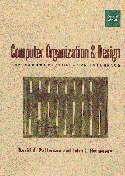 |
| (Textbook. Click for information.) |
CS 2731, Spring 2004
Computer Organization II
Recitation 7: Feb 23, 25, Mar 1, 3
Implementing a recursive function
in MIPS
(raise to a power)
MW 02:00-02:50 pm, SB 3.01.04
Due: 2004-03-10 23:59:59